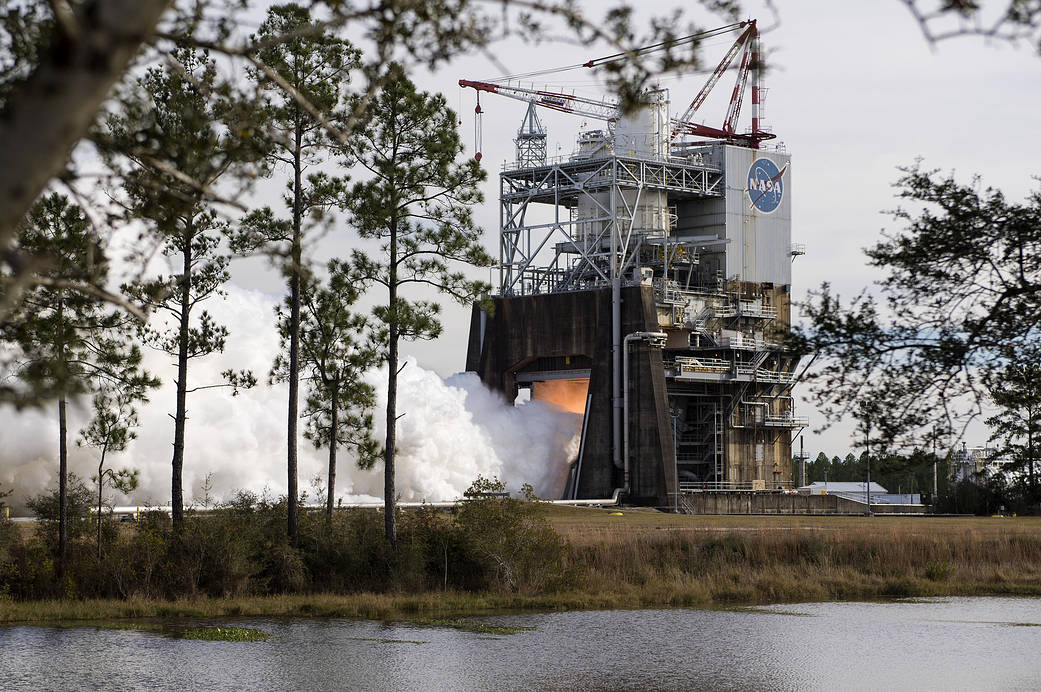NASA engineers capped a year of Space Launch System testing with a final RS-25 rocket engine hot fire on Dec. 13 at Stennis Space Center near Bay St. Louis, Miss. The 400-second test on the A-1 Test Stand was a “green run” test of an RS-25 flight controller. It marked the eighth RS-25 test of the year and the sixth flight controller to be tested for use on NASA’s new Space Launch System (SLS) vehicle. The engine tested also included a large 3D-printed part scheduled for use on future RS-25 flight engines. The part, a beach ball-sized pogo accumulator assembly, is a complex piece of hardware that acts as a shock absorber to dampen vibrations, or oscillations, caused by propellants as they flow between the vehicle and the engine. Initial reports show the 3D-printed hardware performed as expected, opening the door for more components scheduled for future tests. The test was part of the SLS Program’s RS-25 affordability initiative – a collaborative effort between NASA and industry partner Aerojet Rocketdyne to reduce the engine’s overall production costs by using new advanced manufacturing techniques while maintaining reliability and safety. Engineers were able to make the pogo accumulator with fewer welds using additive manufacturing, reducing the cost and time needed to make it. NASA is testing the RS-25 engines and controllers to help power the SLS rocket designed and send astronauts to deep-space destinations. The RS-25 engines for the initial SLS flights are leftover space shuttle main engines, modified to supply the added power needed for the larger, heavier SLS rocket. A major part of that modification is the new engine controller that serves as the “brain” of the engine, communicating with SLS flight computers to ensure engines are performing at needed levels. NASA tested the first SLS flight controller unit in March. The agency then launched a series of summer flight controller tests before testing an actual RS-25 flight engine in October. During tests, the controllers are installed on a developmental RS-25 engine, which is then fired in the same manner and for the same amount of time that will be needed during an SLS launch. Once tested and certified, the new flight controllers are installed on RS-25 engines designated for use on SLS missions. Four RS-25 engines will help power the SLS at launch, providing a combined 2 million pounds of thrust and firing in conjunction with a pair of solid rocket boosters. With the boosters, total thrust at liftoff will exceed 8 million pounds. The SLS Exploration Mission-1 (EM-1) will serve as the first flight for the new rocket and will carry an uncrewed Orion spacecraft. The EM-2 flight will transport a crew of astronauts aboard Orion. In addition to testing RS-25 engines for those flights at Stennis, NASA is preparing the B-2 Test Stand at the center to test the actual SLS core stage for EM-1. That testing will involve installing the actual flight core stage on the B-2 stand and firing all four RS-25 engines simultaneously, just as during an actual launch.
3 min read
























